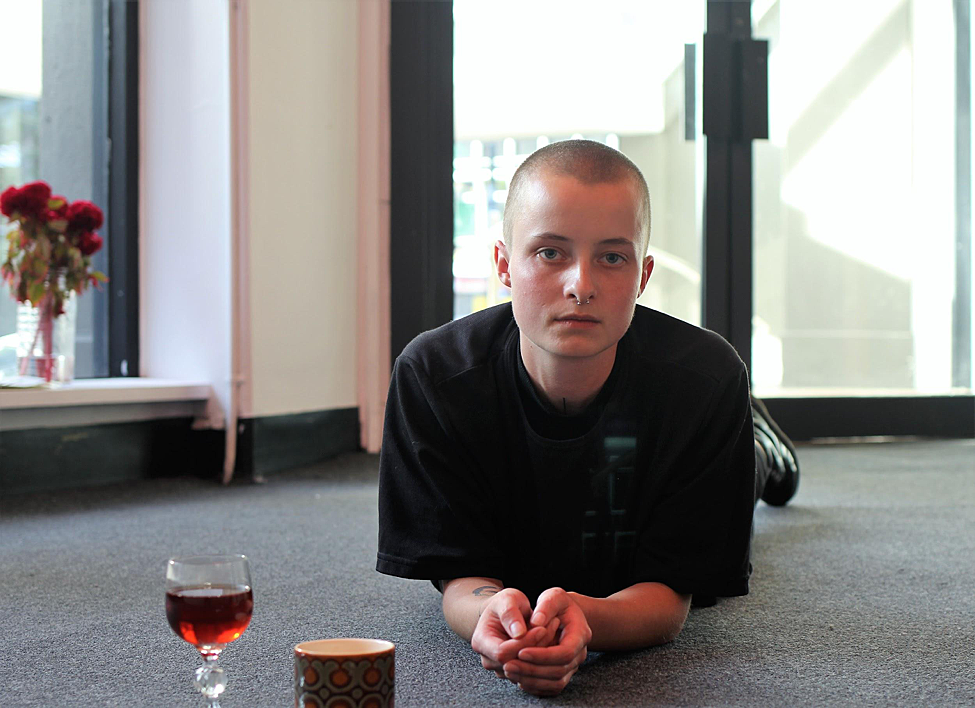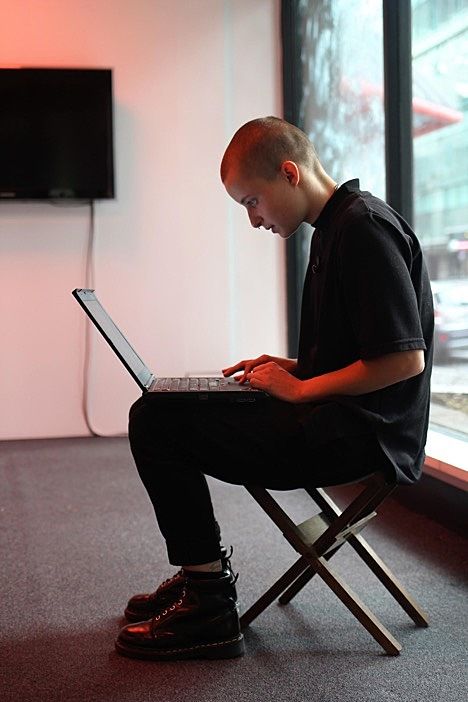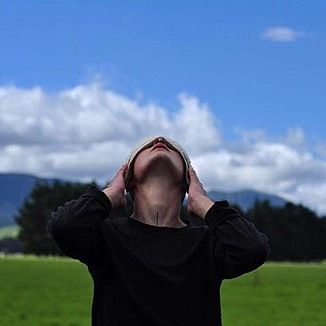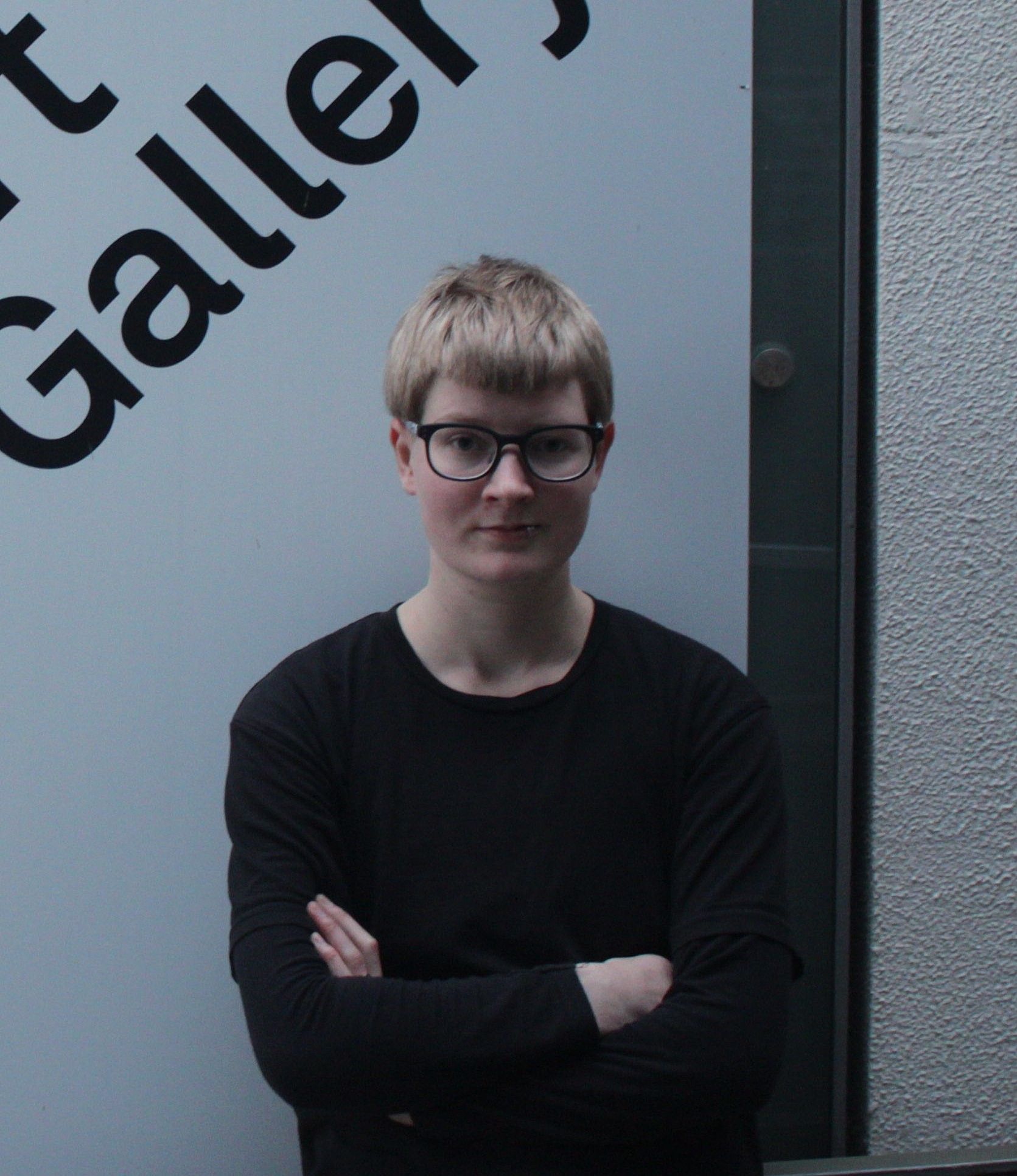The Edited Self: An Interview with Jordana Bragg
Ellie-Lee Duncan and Jordana Bragg talk about archiving the self and refusing the binary.
Ellie-Lee Duncan and Jordana Bragg talk about archiving the self and refusing the binary.
We are living in a performative moment. Social media and selfies can offer us an escape from our realities, as well as a way of creating perfect versions of ourselves. Online, we are able to constantly create and recreate ourselves.
Jordana Bragg’s artistic practice is extensive, encompassing moving image, photography, performance and digital modalities. Their work occupies both physical galleries and social media platforms, the latter spaces being highly suited to hosting works which explore the way we interact with the digital world. Dealing with ideas around proliferation, flux, immediacy, and authenticity, it is Jordana’s intention to curate a particular, branded version of themself through their work.
Jordana’s social media accounts are highly curated and performative. Authenticity is not a priority for them, although the semblance of it still stands ‒ an acknowledgement of the fact that it is necessary to appear vulnerable in order to appear authentic online. Jordana sees this as offering a freedom of expression that is counter to hegemonic masculinity, yet still falls within the boundaries of preset patriarchal criteria. In their earlier work, Jordana employed pastel, feminine colour palettes and explored the performance of repeated bodily motions, femininity, emotionality and gesture. More recently, Jordana has established their artistic practice as a game. On the surface, it seems concerned with emotional existence and contemplation, with a tender quality. Although their works may appear realistic, there is little concern with the boundaries of artificiality or authenticity, and more emphasis placed on creating a performance. Whenever they release a work which appears more personal, more revealing of themself, we become acutely aware this has also been thought out, curated, and constructed ‒ sometimes days or weeks in advance.
Based in Wellington, Jordana co-founded the artist-run initiative MEANWHILE, which they currently run with fellow artist Jesse Bowling. Since graduating their BFA with Honours from Massey University, like all creative millennials, Jordana juggles MEANWHILE with a myriad of other projects, including their own artistic practice, curatorial work, and a breadwinning position as audio-visual technician and gallery host at City Gallery Wellington. They seem to exist on black coffee, cigarettes and ‒ against all logic ‒ sleep deprivation. At one point during our conversation, I mentioned I thought they were pretty cool, to which they replied “Oh, thank you! You should definitely keep that on the record.”
Coming close to meeting our five-plus a day, I interviewed Jordana over pot of herbal tea and slightly fruity leftover beer from the MEANWHILE fridge.
Ellie Lee-Duncan: Your artistic practice extends over various platforms, including social media. How do you consider your online presence? Is it a form you can use as live documentation, an archive of yourself?
Jordana Bragg: Yes, definitely. I agree with the idea of an archive of the self, but I also actively resist it. That’s why I mainly delete everything. What will people learn about me if they go back and see what I was doing two years ago? Does that resonate with what I’m doing now? It’s more about the momentary, and the idea of moving forward, without a history. This is in a lot of the politics of my practice, which is often to do with women’s histories and queer histories ‒ with how they are invisible.
There’s not two genders, but I can play both, and I can play to both.
There’s a lot of policing online, so I thought I’d just police myself. Some of it is about personal safety, and some things I put up even confront me – the nude body for instance. It’s not that I don’t believe in the content that I’m putting up, but to leave it accessible the whole time would make me uncomfortable. I consider it an archive, but I also make it difficult. Someone would have to screenshot it and keep it on their phone ‒ they’d have to create their own archive because I’m not going to keep it. I’m not going to leave it up there.
ELD: Tell me about your creation of self as a constructed representation.
JB: If you’re going to create some kind of performance of yourself, it has to permeate all versions of your being. Online is one of the best platforms for representation or intentional misrepresentation. Everyone does it to a certain degree, and everyone wants to. They may not want to be, but they want to look healthy and wealthy and better. It’s Judith Butler 101, the theory of performativity. Online is often my first port of call because it’s in my hand, it’s accessible to me as a sort of weapon of reconstruction.
The second platform would be my artistic practice, where I really consider that question of identity and multiplicity and myself as a construction ‒ or I play with the idea of myself that I’m often handed. It feeds into what other people want me to be ‒ as an artist, but not as a person.
The question about the construction of a persona often leads to the idea that it’s false. I’m not particularly interested in the idea of authenticity or being genuine. But the persona that I put on is not less true. I’m not hiding behind it. It’s not a mask, it’s more honest. And that’s why I find it such a vulnerable position to be in. I find it fun, the idea that it can be played like a game.
For me, identifying as non-binary, and being visually identified as being androgynous allows me a fluidity which is an advantage. There’s not two genders, but I can play both, and I can play to both. And that, I think, has aided my performance practice, because the way you look and the way you use your body will change the way people perceive you. It’s a little game, because I can reshape and create these characters of myself outside of gender and the binary.
ELD: This is very different from the last time we spoke about your practice, when you identified – or vocalised your identity – as a woman. Would you feel comfortable speaking about your identity here?
JB: Yes, I always think it’s a worthy conversation. I’ve always felt more or less fluid on the spectrum. Previously it’s been a lot harder to acknowledge that. Mainly because of being considered a feminist. Or being considered a homosexual woman, or a lesbian. To do those things, you are gendered. To say you are non-binary, not necessarily a woman, not necessarily a man, means you’re in-between, and happily so. It’s about a linguistic vulnerability and all of these terms don’t actually match up to make a whole person. So I can identify as being non-binary and a feminist. The writing about me up until very recently has all the pronouns as ‘she’ when my pronouns are ‘they/them’. Reading some of the older writing about me is quite jarring. I mean, how come I didn’t think to do that from the outset? But anyway. You find things out about yourself, and you tell people.
ELD: Identity is always an exploration of self. I’m openly non-binary, and I was aware that you have been presenting as androgynous, so I wondered if that was something you were particularly interested in exploring.
JB: Do you find ‘non-binary’ sits well with you? As a term, as a definition?
ELD: I don’t know. Definitions really piss me off. Now we’re seeing this proliferation of terminology for gender identities that exist between the spectrum or outside of the binary. It’s difficult because these terms in some ways will fit me, but there are some terms that won’t. Terms like genderqueer, genderfluid, neutrois, agender, and trans-masculine will always come up again and again. However, something that I like is that the term ‘non-binary’ allows for the flexibility of not necessarily fitting into one distinct category, while also linguistically it is refusing the concept of the binary as the norm. It’s within the name itself.
Out of interest, the photo of you, with a face-cloth on your face and looking up to the sky – is this work about your social transition?
JB: Yes. Great spotting. No one really picked up on that and I don’t expect my work to be that transparent for everyone to understand all of the time. That’s never fazed me, the idea that anyone can draw anything from my work. I’m not concerned with any specific reading, I got over that the first day I went to art school! You can only give people context and clues, and hope maybe that they’ll put a specific line of thinking together. And there is no archive, as you say.
ELD: How do you think that changing the way you publicly identify yourself will affect your art practice?
JB: I consider that my body has cultural currency, in Wellington specifically. This is more of a proclamation. I have always felt non-binary, but there were no words for it for a really long time, and that was a discomfort I had internally. So, you can say it a few times at a party, but for me I had to tell people, and I had to have an article written about it. But a lot of people don’t know that or haven’t changed, or they don’t know that my pronouns have changed, so there’s still a lot of misgendering going on. You just have to make the appropriate corrections when you can and when you feel safe enough to do so.
If it did impact my practice negatively, that would be a concern for me in a political sense. Why is there no inclusion of non-binary, or why would that make my voice less critical, or less political, or less valid? And maybe why does it make it more valid, or more critical, or more interesting? I do most things either out of pure passion or complete discomfort, and that action was out of complete discomfort with lying. I didn’t choose to do it, I had to do it. It had gotten to an imperative breaking point. The art community, as you say, is quite open to people who identify this way.
I do most things either out of pure passion or complete discomfort, and that action was out of complete discomfort with lying.
ELD: Do you think your ability to discuss your artwork accords you a degree of autonomy over the narrative of your practice?
JB: Yes. The construction of a persona is not just in my work, it’s in the way I speak about my work and the way I present myself at openings. There’s a lot of quite heavily curated ideas that I circulate within my practice and I feel I am able to mediate a lot of what is said about it by how I talk about my work. Or disclaiming politically what the purpose is through artist talks and writer talks. I like to think that my sociability and activating myself in those settings does aid the accessibility of my work.
I’m interested in the idea of the artist persona as mythos, I’m interested in how it permeates my practice. So the body in my work is the myth, but not Jordana Bragg walking down the street.
ELD: What is the value of body language (or lack thereof) in your most recent works? For example, the collarbone tapping in Effortless (2017)?
JB: I get obsessed with repeating one specific motion – like a way of walking, or tapping – and at that time it was the tapping gesture. It was a reoccurring thing in my personal life as a way of staying grounded from anxiety and feeling imminently dissociative all the time. The lack of other body language was because this was the only motion I was interested in at that time. I thought that specific gesture encompassed some of the nervous tension or anxious energy that the transcript was trying to reassert or affirm in this character or person.
I’m constantly interested in body language, not so much in performance art, but everyday interactions, the way people rely on their bodies to convey meaning. Going back to the construction of a persona, it’s not that it’s manipulative, but that you can use your words, body language, eye contact, everything, to persuade – if you’re really connected with what your body is saying and you’re aware of how to use it. I can actually apply body language and facial expression and vocal tone to say something. And you have to be really focussed to be able to do that a lot of the time.
ELD: So you’re talking about body language as something which is more learned, rehearsed, repeated, rather than something that’s an inherent quality?
...there’s a lot of different ways in which the body can be taught to move correctly. And we persecute those that don’t – or can’t – move that way.
JB: Yes, but I think it is inherited as well. Obviously, from watching my mother I know I exhibit so many of her body language qualities. That’s learned behaviour, but there’s also cultural influence – there’s a lot of different ways in which the body can be taught to move correctly. And we persecute those that don’t – or can’t – move that way.
I am interested in the cinematic approach of the feminine body being cut up. In the way that you always see the woman, and you see her feet first, then it pans up, then leg, knee, thigh, abdomen, breast, hover, hover, hover, neck, face. And generally, it won’t show a woman fully. I don’t know why. A lot of cinematic representations of women seem to cut them into pieces.
In my works, I often don’t give people a sense of scale, and people can’t tell how tall I am, or how thin I am, but as soon as people see me against something that is measurable and they can see my height they’re like “oh no, they’re a short stack!” And that’s not necessarily something I want to divulge completely. Body language is so interesting. Especially due to social conditioning. Especially the way cis men are taught to take up or occupy more space. And we are taught to be aware of our space, and the space other people are taking up, and if they are asserting dominance, by spreading their legs wider, or speaking louder, basically all of those attributes of masculine violence. If you are aware of yourself and your body language in that situation, you can reassert yourself.
ELD: Last question, what can we expect from you next?
JB: I have no idea. I never know what to expect from myself. Obviously you can look at my work and see that there’s a strategy in place. Probably some video, some photography, probably some facilitation of MEANWHILE. I’m trying to expand internationally – a bit of travel could be nice. My work is becoming more to do with my body in a specific site, and the location itself is becoming more specific. In my mind, you can’t take the body and call it nowhere, you have to acknowledge the land that you are on. It would be interesting to put myself in different situations and see how that calls to arms some interesting responses.



